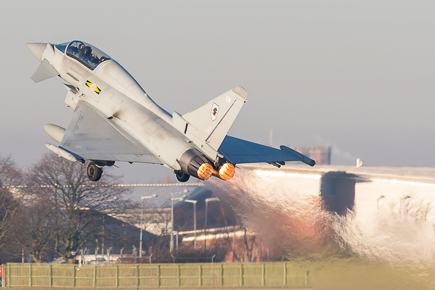Nikon D800
Posted by: Fast Air Photography
Tags:
Nikon D800
Posted date:
December 13, 2012
|
4 Comments
About the author
4 Comments for Nikon D800
Hi Steve,
It terms of quality there is no difference between shooting in FX and cropping or using DX with the crop applied in camera. The biggest difference of course is the size of the files which means less shots per CF card, longer times for the buffer to clear and a max of only 4 fps (DX mode gives you 5 fps or 6 if you use AA batteries or the D4 battery in the grip). That single extra FPS does make a difference and as I’m sure you know even 300 mm on a DX at an air show almost never gets you a fully filled shot. I plan to shoot in DX mode at air shows (even if I find my place in a position to pick up a 500 f/4).
The change between modes is just a menu option (doesn’t require the camera to be turned off or anything like that) so changing between modes only takes a few seconds.
Gordon.
Hi Gordon,
What are your shutter speed settings when using a 36MP body for fast action? I can imagine you need (much) high(er) shutterspeeds than normal on 12MP bodies…
Thanks Jeroen
Hi Jeroen,
I usually shoot 1/1000s to 1/1250s if I’m looking to freeze the action. The sensor doesn’t make a difference to the shutter speed I use but the large file sizes means you get less frames per second and longer write times so you have to be a little more careful not to run out of shutter releases.
Gordon.


















Hi, I was reading with interest your article on the D800 and was wondering if you could help me. I’ve been taking air show photos for years, but this year decided to step up my gear and purchased a 300mm 2.8 vr1 to go with either my D300 or D7000. Seeing as there is no D400 on the horizon I’ve been considering the D800 plus using the crop feature. My questions are about the cropping – how does the DX mode differ from just leaving the camera in full frame and cropping on a pc later and therefore not worrying about framing in the smaller viewfinder? Also is it quick to change modes as the ability to change quickly from FF to DX effectively gives you new flexibility to shoot FF at 300mm say for take off / landings when close and then switch to DX 450mm once up in the air if that makes sense? Hope you can give me some hands on experience before taking the plunge further. Regards Steve